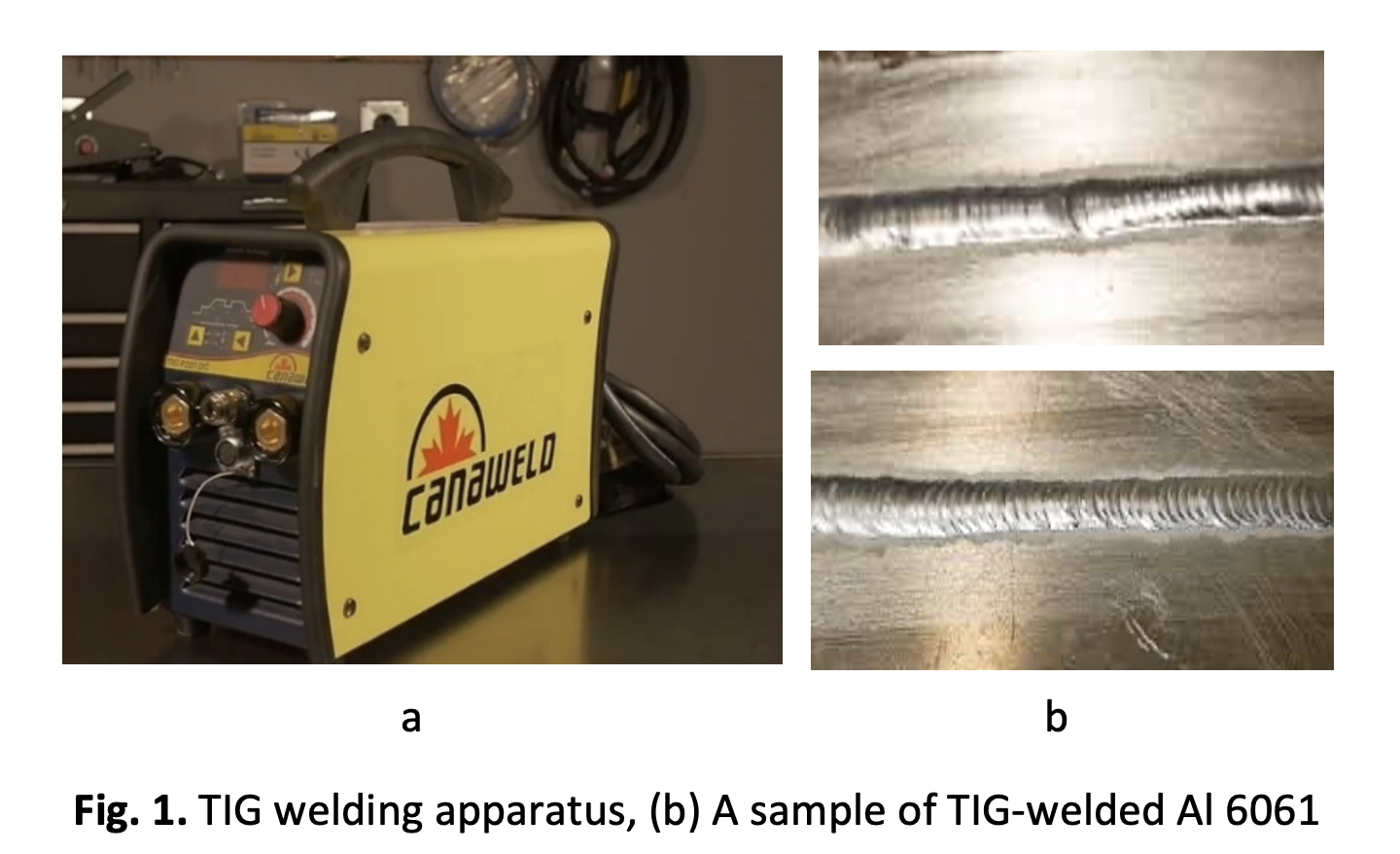Multi-Weld Quality Optimization of Gas Tungsten Arc Welding for Aluminium 6061 using the Grey Relation Analysis-Based Taguchi Method
DOI:
https://doi.org/10.37934/araset.36.1.2642Keywords:
TIG, Al 6061-T3, L9 Taguchi, Hybrid Grey- Taguchi, Multi-performance characteristicsAbstract
The optimization of parameters is crucial in the joining process, particularly in welding, to attain connections with exceptional mechanical properties. In the present study, the welding of aluminium 6061 was conducted with a TIG, an acronym for tungsten inert gas, is formally referred to as gas tungsten arc welding (GTAW) technique, employing a suitable ER 4043 electrode and argon shielding gas. The investigation of optimal welding parameters, specifically current, voltage, and flow rate, is conducted utilizing statistical methodologies such as the hybrid Grey-based Taguchi process. The desired attributes for high-quality welds were established as having high tensile strength, hardness, and a low rate of corrosion. Given the presence of three responses and one objective, the hybrid Grey-based Taguchi method is employed. The statistical approaches have converged on optimal parameters of 120 A, 20 V, and 15 L/min. The present analysis reveals that the ideal welded junction exhibited the following characteristics: a tensile strength of 190.169 MPa, a hardness value of 77HV, and a corrosion rate of 0.29 mm. The current parameter was found to have the highest contribution, accounting for 65.66% of the overall performance of the weldments. Confirmatory testing was conducted in order to confirm the optimization strategy, and the findings indicated that the Grey-based Taguchi technique is a straightforward yet effective approach for optimizing welded connections across several performance criteria.




























